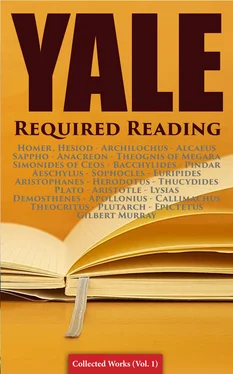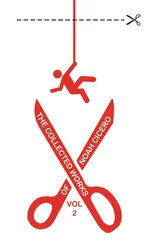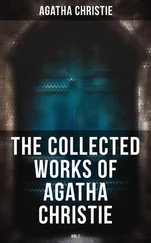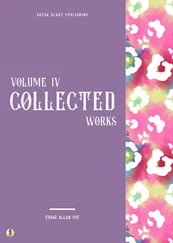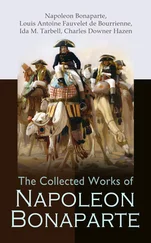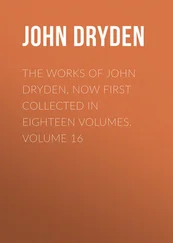But the Cnidian shrine had once another treasure, the beautiful melancholy statue of the seated Demeter of the uplifted eyes; the mourning mother: the weary seeker for the lost maiden: her child Persephone. Far from the ruins above the sea, beneath the scorched seaward wall of rock: far from the aromatic fragrance of the rock-nourished flowers, from the bees, and the playful lizards, Demeter now occupies her place in the great halls of the British Museum. Like the Hymn, this melancholy and tender work of art is imperfect, but the sentiment is thereby rather increased than impaired. The ancients buried things broken with the dead, that the shadows of tool, or weapon, or vase might be set free, to serve the shadows of their masters in the land of the souls. Broken as they, too, are, the Hymn and the statue are “free among the dead,” and eloquent of the higher religion that, in Greece, attached itself to the lost Maiden and the sorrowing Mother. Demeter, in religion, was more than a fertiliser of the fields: Korê, the Maiden, was more than the buried pig, or the seed sown to await its resurrection; or the harvest idol, fashioned of corn-stalks: more even than a symbol of the winter sleep and vernal awakening of the year and the life of nature. She became the “dread Persephone” of the Odyssey,
“A Queen over death and the dead.”
In her winter retreat below the earth she was the bride of the Lord of Many Guests, and the ruler “of the souls of men outworn.” In this office Odysseus in Homer knows her, though neither Iliad nor Odyssey recognises Korê as the maiden Spring, the daughter and companion of Demeter as Goddess of Grain. Christianity, even, did not quite dethrone Persephone. She lives in two forms: first, as the harvest effigy made of corn-stalks bound together, the last gleanings; secondly, as “the Fairy Queen Proserpina,” who carried Thomas the Rhymer from beneath the Eildon Tree to that land which lies beyond the stream of slain men’s blood.
“For a’ the bluid that’s shed on earth
Flows through the streams of that countrie.”
Thus tenacious of life has been the myth of Mother and Maiden, a natural flower of the human heart, found, unborrowed, by the Spaniards in the maize-fields of Peru. Clearly the myth is a thing composed of many elements, glad and sad as the waving fields of yellow grain, or as the Chthonian darkness under earth where the seed awaits new life in the new year. The creed is practical as the folk-lore of sympathetic magic, which half expects to bring good harvest luck by various mummeries; and the creed is mystical as the hidden things and words unknown which assured Pindar and Sophocles of secure felicity in this and in the future life.
The creed is beautiful as the exquisite profile of the corn-tressed head of Persephone on Syracusan coins: and it is grotesque as the custom which bade the pilgrims to Eleusis bathe in the sea, each with the pig which he was about to sacrifice. The highest religious hopes, the meanest magical mummeries are blended in this religion. That one element is earlier than the other we cannot say with much certainty. The ritual aspect, as concerned with the happy future of the soul, does not appear in Iliad or Odyssey, where the Mysteries are not named. But the silence of Homer is never a safe argument in favour of his ignorance, any more than the absence of allusion to tobacco in Shakspeare is a proof that tobacco was, in his age, unknown.
We shall find that a barbaric people, the Pawnees, hold a mystery precisely parallel to the Demeter legend: a Mystery necessarily unborrowed from Greece. The Greeks, therefore, may have evolved the legend long before Homer’s day, and he may have known the story which he does not find occasion to tell. As to what was said, shown, and done in the Eleusinia, we only gather that there was a kind of Mystery Play on the sacred legend; that there were fastings, vigils, sacrifices, secret objects displayed, sacred words uttered; and that thence such men as Pindar and Sophocles received the impression that for them, in this and the future life, all was well, was well for those of pure hearts and hands. The “purity” may partly have been ritual, but was certainly understood, also, as relating to excellence of life. Than such a faith (for faith it is) religion has nothing better to give. But the extreme diligence of scholars and archæologists can tell us nothing more definite. The impressions on the souls of the initiated may have been caused merely by that dim or splendid religious light of the vigils, and by association with sacred things usually kept in solemn sanctuaries. Again, mere buffoonery (as is common in savage Mysteries) brought the pilgrims back to common life when they crossed the bridge on their return to Athens; just as the buffooneries of Baubo brought a smile to the sad lips of Demeter. Beyond this all is conjecture, and the secret may have been so well kept just because, in fact, there was no secret to keep. 59
Till the end of the present century, mythologists did not usually employ the method of comparing Greek rites and legends with, first, the sympathetic magic and the fables of peasant folk-lore; second, with the Mysteries and myths of contemporary savage races, of which European folk-lore is mainly a survival. For a study of Demeter from these sides (a study still too much neglected in Germany) readers may consult Mannhardt’s works, Mr. Frazer’s “Golden Bough,” and the present translator’s “Custom and Myth,” and “Myth, Ritual, and Religion.” Mr. Frazer, especially, has enabled the English reader to understand the savage and rural element of sympathetic magic as a factor in the Demeter myth. Meanwhile Mr. Pater has dealt with the higher sentiment, the more religious aspect, of the myth and the rites. I am not inclined to go all lengths with Mr. Frazer’s ingenious and learned system, as will be seen, while regretting that the new edition of his “Golden Bough” is not yet accessible.
If we accept (which I do not entirely) Mr. Frazer’s theory of the origin of the Demeter myth, there is no finer example of the Greek power of transforming into beauty the superstitions of Barbarism. The explanation to which I refer is contained in Mr. J. G. Frazer’s learned and ingenious work, “The Golden Bough.” While mythologists of the schools of Mr. Max Müller and Kuhn have usually resolved most Gods and heroes into Sun, Sky, Dawn, Twilight; or, again, into elemental powers of Thunder, Tempest, Lightning, and Night, Mr. Frazer is apt to see in them the Spirit of Vegetation. Osiris is a Tree Spirit or a Corn Spirit (Mannhardt, the founder of the system, however, took Osiris to be the Sun). Balder is the Spirit of the Oak. The oak, “we may certainly conclude, was one of the chief, if not the very chief divinity of the Aryans before the dispersion.” 61If so, the Aryans before the dispersion were on an infinitely lower religious level than those Australian tribes, whose chief divinity is not a gum-tree, but a being named “Our Father,” dwelling beyond the visible heavens. When we remember the vast numbers of gods of sky or heaven among many scattered races, and the obvious connection of Zeus with the sky ( sub Jove frigido ), and the usually assigned sense of the name of Zeus, it is not easy to suppose that he was originally an oak. But Mr. Frazer considers the etymological connection of Zeus with the Sanscrit word for sky, an insufficient reason for regarding Zeus as, in origin, a sky-god. He prefers, it seems, to believe that, as being the wood out of which fire was kindled by some Aryan-speaking peoples, the oak may have come to be called “The Bright or Shining One” (Zeus, Jove), by the ancient Greeks and Italians. 62The Greeks, in fact, used the laurel ( daphne ) for making fire, not, as far as I am aware, the oak. Though the oak was the tree of Zeus, the heavens were certainly his province, and, despite the oak of Dodona, and the oak on the Capitol, he is much more generally connected with the sky than with the tree. In fact this reduction of Zeus, in origin, to an oak, rather suggests that the spirit of system is too powerful with Mr. Frazer.
Читать дальше
